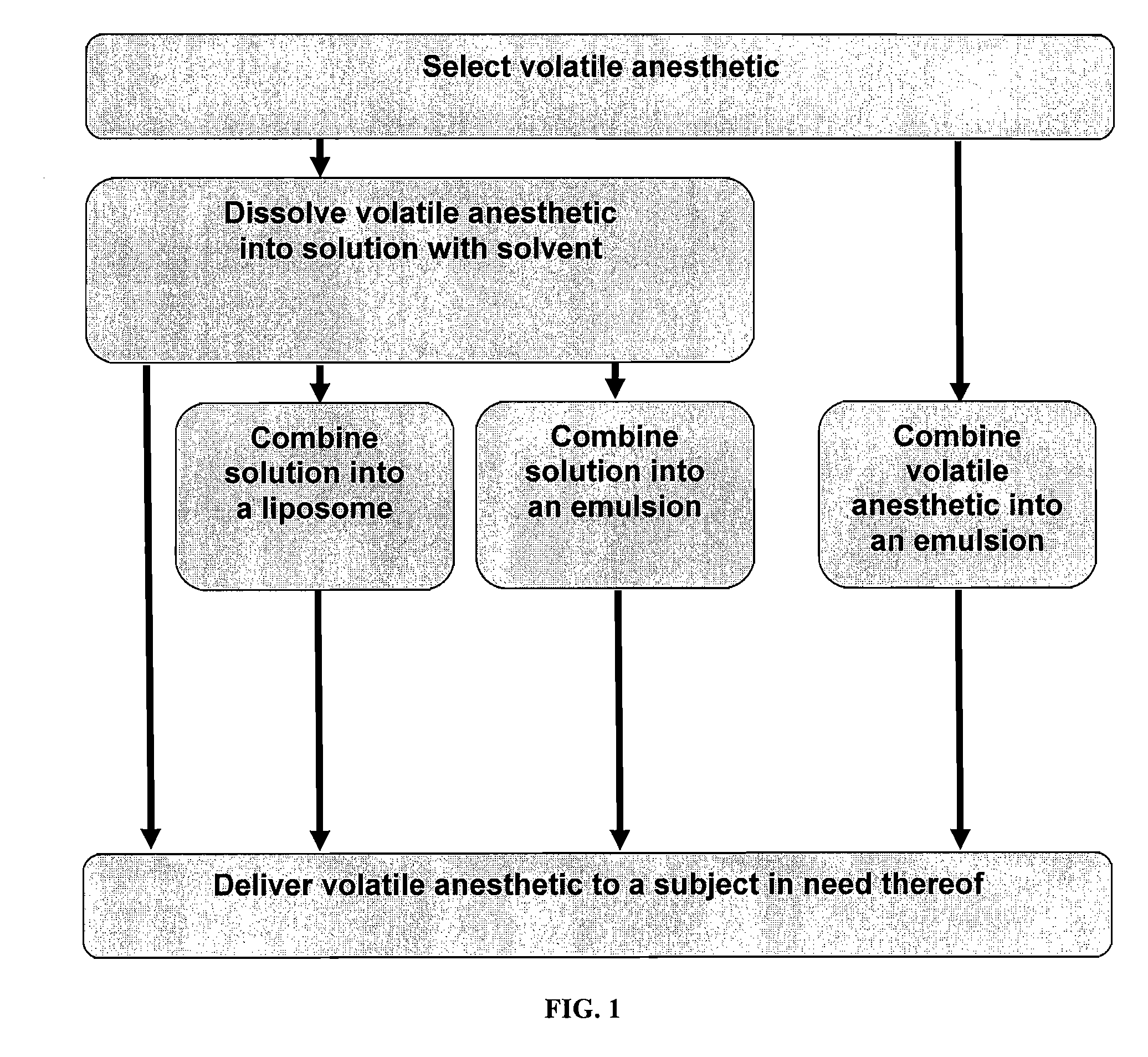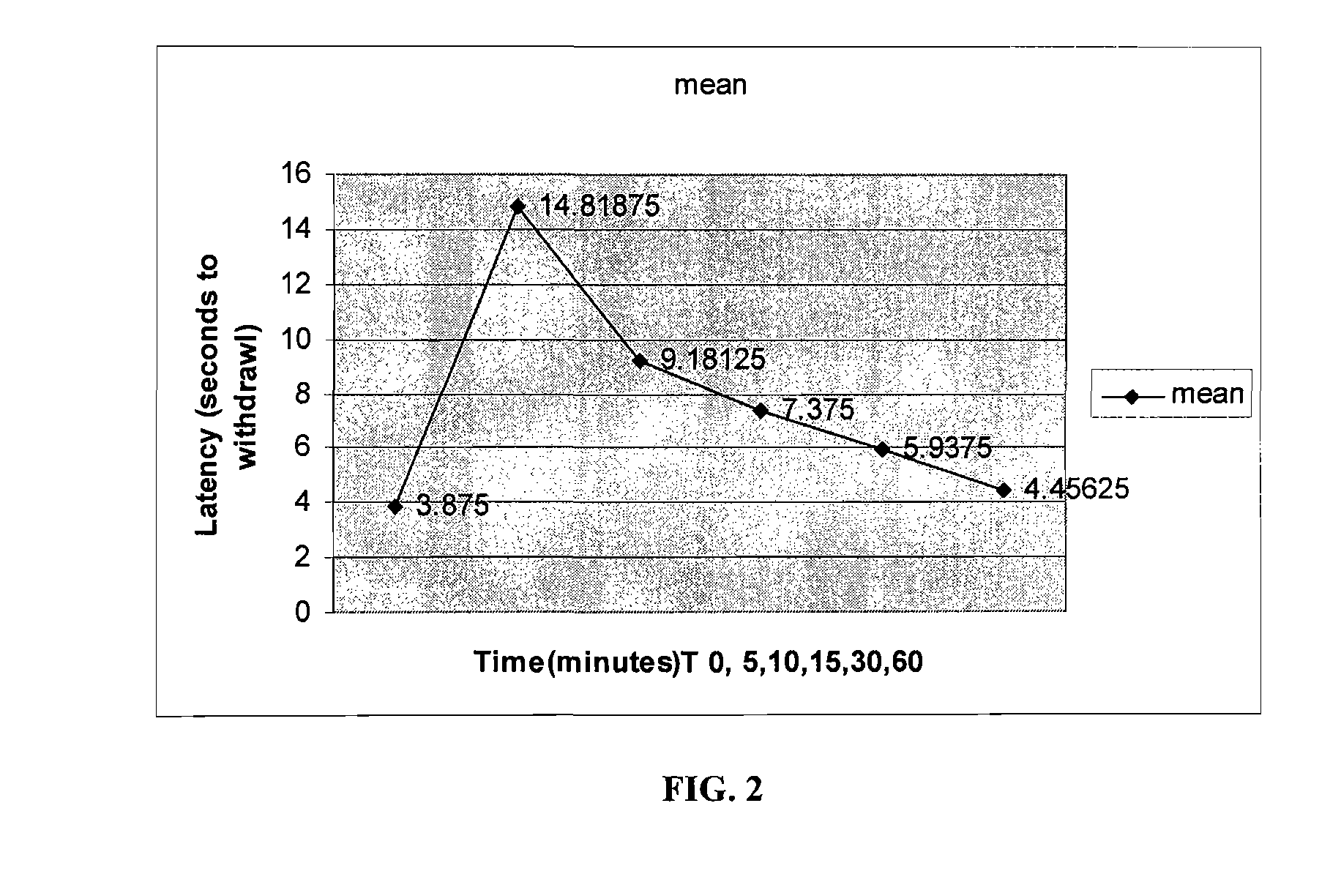Volatile Anesthetic Compositions and Methods of Use
a technology compositions, applied in the field of volatile anesthetic compositions, can solve the problems that certain drugs presently used for regional anesthesia may not be effectively used on various individuals for a variety of reasons, and achieve the effect of reducing pain and eliminating pain perception
- Summary
- Abstract
- Description
- Claims
- Application Information
AI Technical Summary
Benefits of technology
Problems solved by technology
Method used
Image
Examples
experimental examples
[0105]The invention is further described in detail by reference to the following experimental examples. These examples are provided for purposes of illustration only, and are not intended to be limiting unless otherwise specified. Thus, the invention should in no way be construed as being limited to the following examples, but rather, should be construed to encompass any and all variations which become evident as a result of the teaching provided herein.
example 1
Intrathecal Administration of Isoflurane and Sevoflurane
[0106]This study was designed to evaluate efficacy of direct intrathecal injection of volatile anesthetic in reducing pain and providing analgesia. The study was conducted over a one (1) month period using the volatile anesthetics isoflurane and sevoflurane injected directly intrathecally or dissolved in saline as shown in the studies below. The subject animal used was the rat, since the rat has a well-established model of pain / analgesia testing. In particular, Sprague-Dawley rats weighing over 350 gm were used. The rats were anesthetized with pentobarbital (50 mg / kg), and the anesthetic depth of the animals was determined by corneal reflex and paw withdrawal reflex to a noxious stimulus.
[0107]The neck of the rats were shaved and cleaned with disinfectant solutions in order to avoid bacterial contamination during surgery. A midline surgical dissection of the posterior neck muscles was performed to obtain access to the occipito-...
example 2
Intrathecal Administration of Isoflurane Dissolved in Saline
[0117]Isoflurane was dissolved into saline using the following method (also referred to as the “bubbling” method). Study C: A mock vaporizing device was created using a 500 ml modified Erlenmeyer flask (2 inlets and 1 catheter into the liquid phase). The flask was partially filled with 0.9% normal saline and a stoppered glass pipette was inserted into the bottom of the liquid phase for injection of isoflurane. A second egress pipette allowed egress of gas from the closed container. 2% isoflurane solution in oxygen at 2 L / min was injected through the pipette, saturating the 0.9% saline solution after approximately 10 minutes of bubbling. 5 mL was drawn from the saturated saline solution and administered to 10 animals using the procedures outlined in Example I above.
[0118]For study C, all animals were prepared as for experiments A and B. The inventors injected 4 animals with 5 microliter of dissolved isoflurane (as prepared i...
PUM
| Property | Measurement | Unit |
|---|---|---|
| concentration | aaaaa | aaaaa |
| concentration | aaaaa | aaaaa |
| concentration | aaaaa | aaaaa |
Abstract
Description
Claims
Application Information
 Login to View More
Login to View More - R&D
- Intellectual Property
- Life Sciences
- Materials
- Tech Scout
- Unparalleled Data Quality
- Higher Quality Content
- 60% Fewer Hallucinations
Browse by: Latest US Patents, China's latest patents, Technical Efficacy Thesaurus, Application Domain, Technology Topic, Popular Technical Reports.
© 2025 PatSnap. All rights reserved.Legal|Privacy policy|Modern Slavery Act Transparency Statement|Sitemap|About US| Contact US: help@patsnap.com



